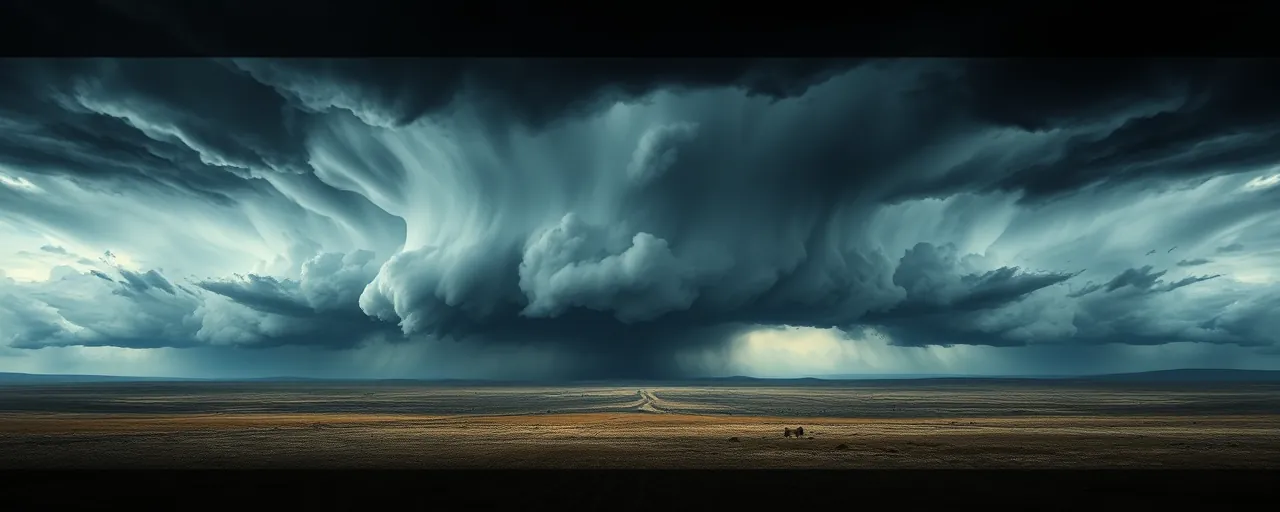A Stormy Wake-Up Call
March 2025 didn’t ease into spring. It roared in with a vengeance, delivering more than 200 tornadoes across the United States, a tally that’s over twice the monthly average. From Texas to Tennessee, a multi-day outbreak left a trail of wreckage, claiming lives and leveling homes. Arkansas bore the brunt, with two EF-4 tornadoes tearing through on the same day, a rare and devastating double blow. For people watching the skies, it felt like nature had flipped a switch, unleashing chaos that caught communities off guard.
The numbers tell a stark story. The National Centers for Environmental Information reported this as one of the most active tornado months in recent memory, part of a broader pattern of extreme weather that’s hard to ignore. Beyond the twisters, wildfires raged across southern Appalachia, scorching over 30,000 acres, while the contiguous U.S. logged its sixth-warmest March on record. For those new to the climate conversation, this isn’t abstract science; it’s about real homes lost, real landscapes altered, and real questions about what comes next.
Twisters on the Move
Tornadoes aren’t new to the U.S., but their behavior is shifting. Researchers tracking these storms note a drift eastward, away from the traditional Tornado Alley stretching across Texas and Oklahoma, toward the Midwest and Southeast. March’s outbreak fits this trend, with supercell storms clustering into larger, more destructive events. Experts tie this to rising atmospheric instability, a byproduct of warmer temperatures that juice up the conditions storms thrive on. Yet, not everyone agrees on the full picture; some argue wind shear, another key ingredient, might weaken under future warming, complicating predictions.
What’s clear is the human toll. Nighttime tornadoes, increasingly common, are proving deadlier, with visibility low and warnings harder to heed while people sleep. In 2025 alone, 33 fatalities have been linked to tornadoes so far, a grim reminder of the stakes. For families in Arkansas or Tennessee, rebuilding isn’t just about bricks and mortar; it’s about grappling with a climate that feels less predictable by the day.
Heat and Flames Add Fuel
Temperatures in March didn’t just climb; they soared. The contiguous U.S. averaged 46.9°F, over five degrees above the norm, with states like Kansas and Nebraska hitting near-record highs. Alaska and Hawai’i weren’t spared either, with Southcentral Alaska and Kaua’i posting their own heat milestones. This warmth isn’t a fluke, researchers say; it’s part of a decades-long trend where nearly every U.S. city has warmed since 1970. For farmers, that means scrambled growing seasons. For cities, it’s strained power grids and parched water supplies.
Then there’s the fire. In southern Appalachia, strong winds and dry conditions turned downed trees from Hurricane Helene into kindling, feeding wildfires that raced across the region. Drought played its part too, with 43.4% of the Lower 48 still gripped by arid conditions in early April. Firefighters battled not just flames but a landscape primed to burn, a scenario echoed in California’s past megafires. Voices in land management circles call for better forest care, while others point to climate change as the root driver, a debate that’s as heated as the blazes themselves.
Rain, or Lack Thereof
Precipitation painted a patchy picture. The U.S. averaged 2.38 inches in March, a hair below normal, but the spread was uneven. The northern Plains and Southwest stayed dry, worsening drought in places like West Virginia, which saw its fifth-driest March. Meanwhile, Michigan and Wisconsin drowned in their wettest March in decades. Globally, climate change is tweaking these patterns, boosting extreme rain in some spots while starving others, a dynamic that’s upending water management from reservoirs to floodwalls.
For everyday people, it’s tangible. Dry spells shrink crops and hike food prices; heavy rains flood streets and ruin basements. Looking ahead, forecasters expect wetter conditions from the south-central Plains to the Ohio Valley in April, offering some relief, while the Southwest braces for more dryness. It’s a balancing act, and one that’s getting trickier as the climate keeps shifting gears.
What It All Means
March 2025 wasn’t an anomaly; it was a loud signal. The tornadoes, the heat, the fires, they’re threads in a larger tapestry of change, woven from decades of warming and weather extremes. Scientists link these events to human-driven climate shifts, from greenhouse gases to deforestation, though natural cycles like La Niña add their own twist. For residents picking up the pieces, the why matters less than the what: damaged infrastructure, disrupted lives, and a growing sense that the old rules don’t apply.
Looking forward, the outlook mixes hope with caution. Drought might ease in the Great Lakes, but it’s digging in across the Southwest. Wildfire risks loom large into April, stretching from Alaska to the Mid-Atlantic. For those just tuning in, it’s not about picking sides in a debate; it’s about understanding a world where tornadoes double, fires flare, and temperatures climb, all while people adapt to a reality that’s rewriting itself in real time.
